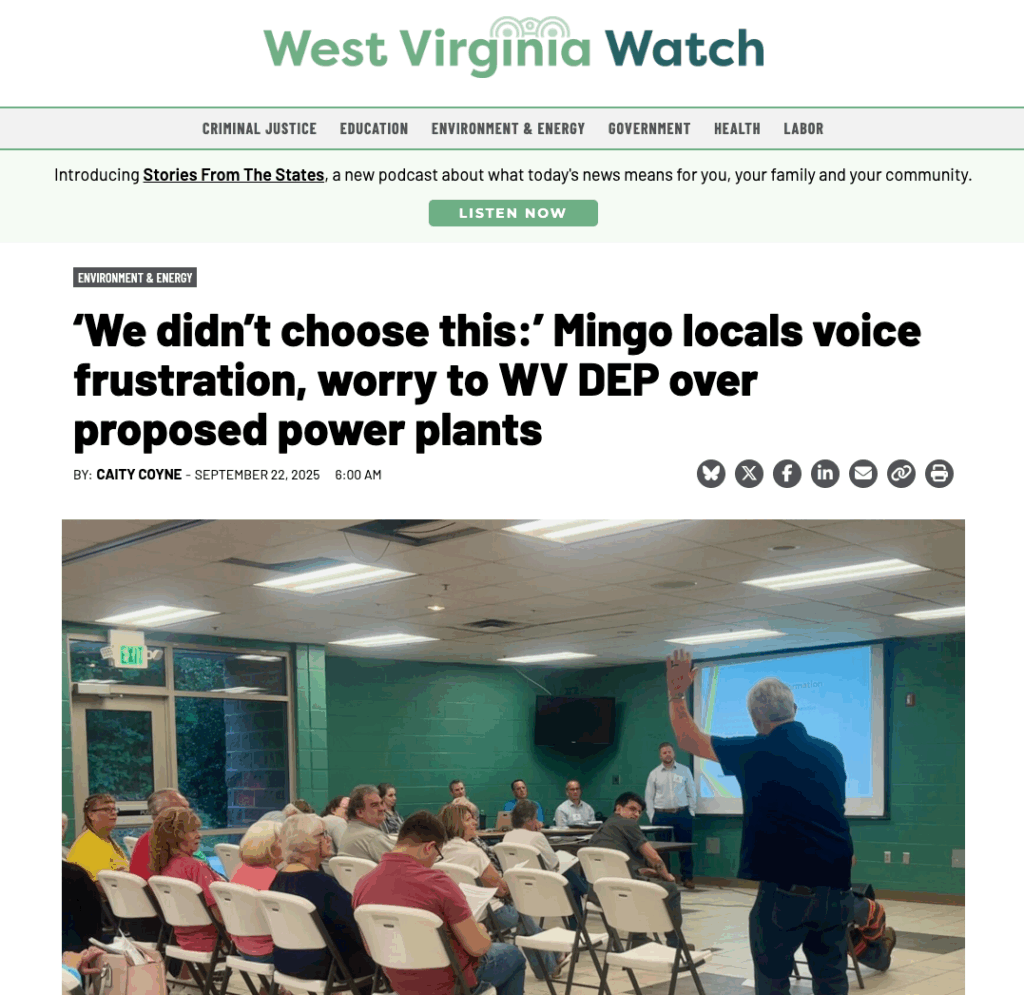After outcry from residents of Mingo County, West Virginia, who forced the state’s Department of Environmental Protection to extend a public comment period on proposed data center projects, the DEP held a public hearing on the impacts of the projects on September 18th at the Larry Joe Harless Community Center in Gilbert.

“We didn’t choose this,” said Pam Surber, a grandmother who has lived in Gilbert her entire life, speaking to officials. “(The developers) are only putting the dollar before our health and our lives in this area.”
Surber is one of the dozens of Mingo County residents who turned out to discuss the permits with the DEP. Around 15 spoke, with none in favor of the project. When Bobby May, a Wharnecliffe resident, asked people in the audience to raise their hands if they opposed the project, almost every hand in the room went up.

““I feel that in the southern part of West Virginia, that we are very vulnerable,” said May, who like others in the room is a member of the United Mine Workers of America. “We do not deserve [to have them] profit over our lives and our health.”
Southern West Virginia has a long history of poor health and labor conditions tied to the extractive coal industry. In 1921, the nation’s largest labor uprising occurred at Blair Mountain in neighboring Logan County, when mine management sought to prevent unionization.
The Mingo County data centers are just the latest effort by New York-based TransGas to install polluting facilities in the region. They first secured permits to convert coal to liquid fuel seventeen years ago, then converted that project into a proposal to build the world’s largest ammonia plant, once again derived from coal.
TransGas then sought and secured green-energy incentives under the Biden administration, which they are now hoping to use to finance the data-center project, for which they have secured two permits.The two proposed facilities would operate on “microgrids” of 117 engines each, powered by methane and diesel, which would be trucked in to the facilities.
According to TransGas’s own filings, the facility would emit as much as 412 tons of carbon monoxide, 488 tons of nitrogen oxides, and 476 tons of soot into the atmosphere every year, heightening concern over the environmental impacts of the project
“Black lung affects every household around these facilities, and black lung treatment is becoming more difficult to access,” said Tyler Cannon, who organizes for WVCAG in the two counties. “Despite all of these conditions, local, state, and federal officials are saying this is a national security interest. And if they’re willing to take this place and put more on these people, when these people have already had enough, they will treat everyone else the same way.”